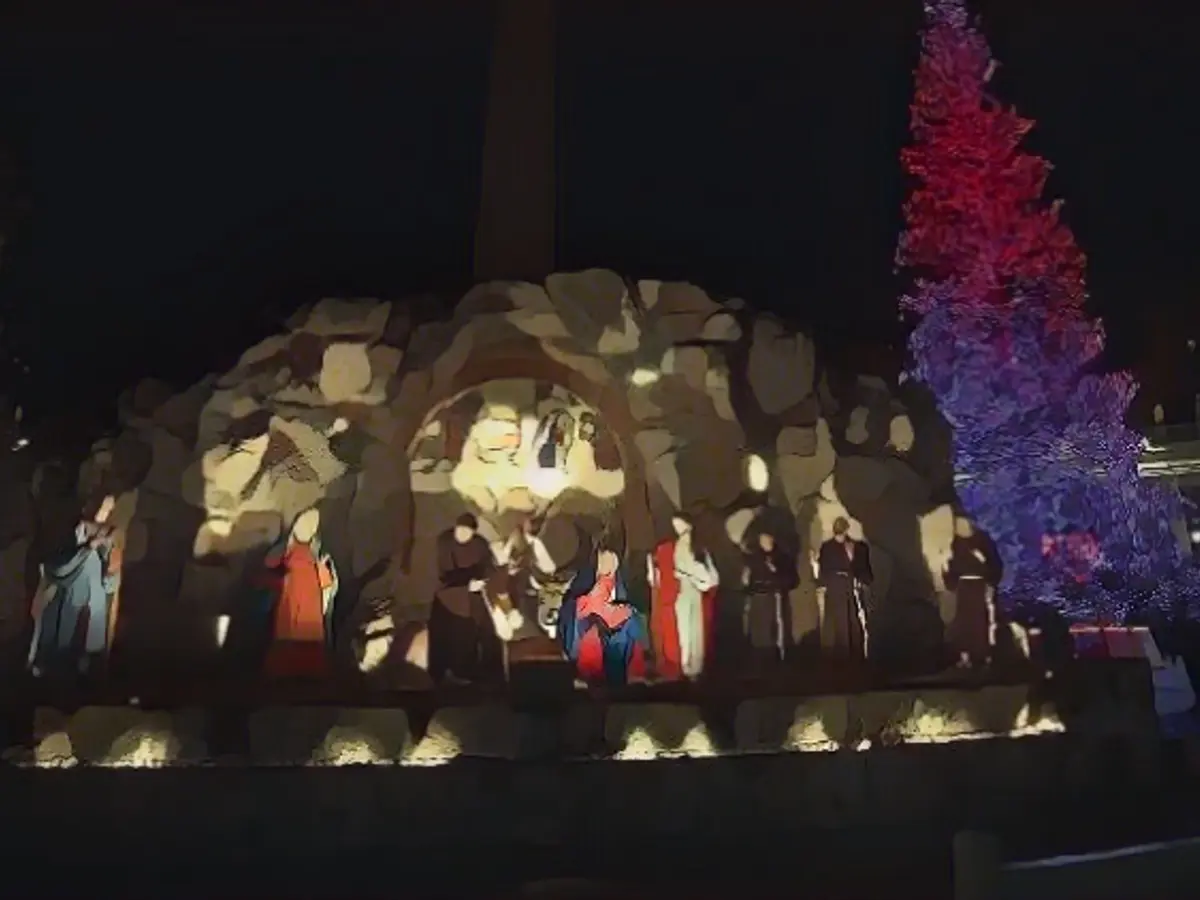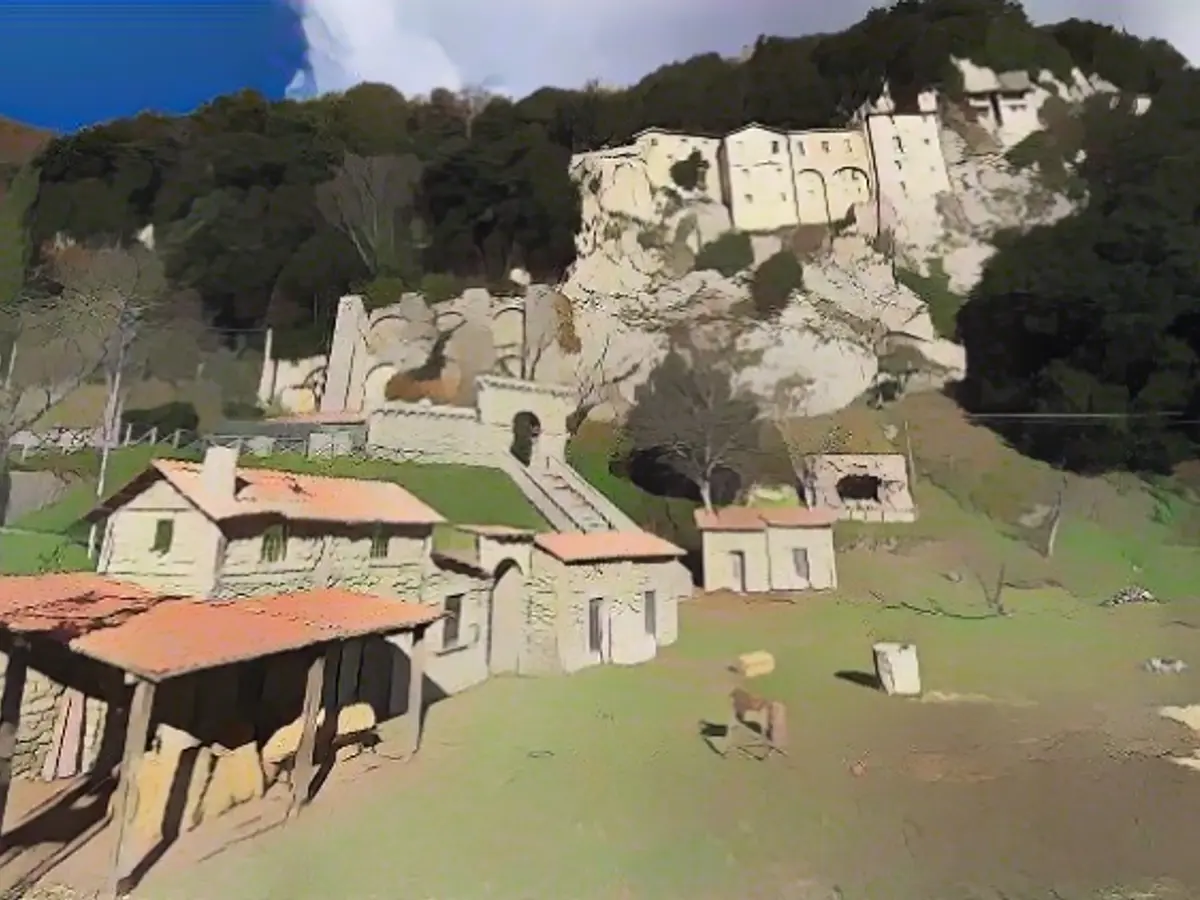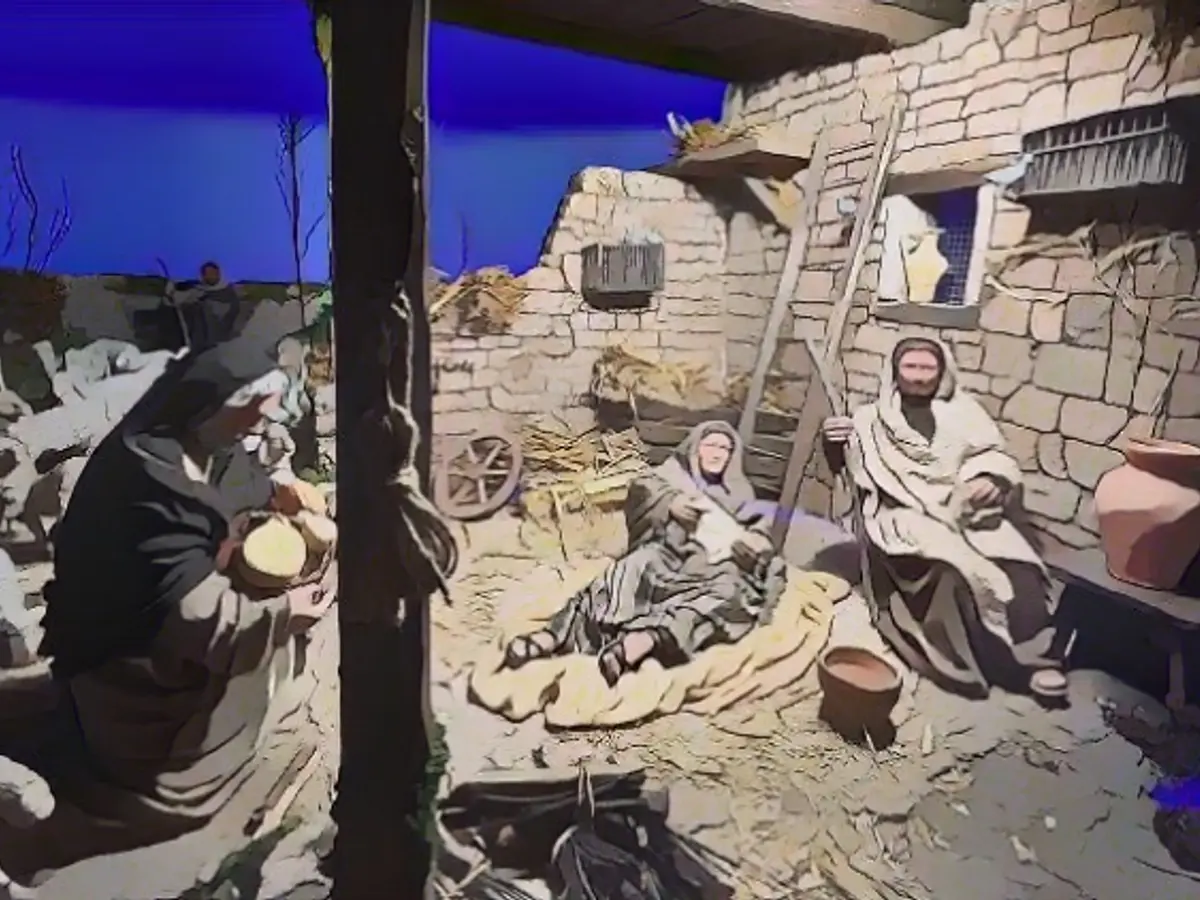Mary and Joseph were missing from the first crib
In many households, nativity scenes are a traditional part of Christmas. According to legend, they were invented exactly 800 years ago by Francis of Assisi - with an ox and a donkey. Mary and Joseph were added later. As did other figures, some of which are not exactly Christmassy.
There is one more reason to celebrate at Christmas this year: apart from 2023 years since the birth of Christ, the nativity scene will be exactly 800 years old on the night of December 25 according to the official interpretation of the Roman Catholic Church. The first nativity scene in Christian history is said to have been performed on Christmas night in 1223 in a rocky cave near the central Italian village of Greccio. According to legend, the idea came from St. Francis of Assisi, the namesake of today's Pope Francis.

The jubilee is being celebrated on a correspondingly grand scale, both in Greccio and in the Vatican. In the Sabine mountains, an hour and a half's drive from Rome, it is half-time of an eight-week cultural program. This year, Francis had a Greccio nativity scene with life-size figures set up in St. Peter's Square. The head of 1.3 billion Catholics is considered a lover of this popular tradition - in line with the idea that it is precisely the small and simple things that point the way to God. In his childhood, the nativity scene was even more important than the Christmas tree, said the Pope. "In my parents' house in Buenos Aires, this sign was never missing at Christmas."
Tradition in many living rooms
This was also a tradition in Europe. In Catholic regions in particular, it was a good custom to recreate the pious scene from the stable in Bethlehem in the living room at Christmas: with small figures made of wood, wax, hard cast iron, clay or papier-mâché, often against the backdrop of one's own homeland. Handmade scenes from the Alps, Provence and the area around Naples were particularly popular. For many farmers, making nativity scenes in winter was a highly valued sideline.
The scene was usually the same: the baby Jesus in a feeding trough in the center, Mary and Joseph next to him, as well as an ox and donkey, shepherds and musicians. It was important that little Jesus was not allowed to be placed in the manger before Christmas Eve and that the three kings - and their camels - were only added on January 6. By February 2 at the latest, the Feast of Candlemas, everything was put back in a box or carton until the following December.
Over time, more and more figures were added. In Italy, where nativity scenes are still important today, pizza bakers are almost a standard feature. Elsewhere, characters from "Star Wars" or "Sesame Street" were added. In German living rooms, there were a few years when the SA and the Wehrmacht paid their respects to the baby Jesus. In London, the Madame Tussauds wax museum got into a lot of trouble because the Holy Family there consisted of the Beckhams. With the increasing commercialization of Christmas, nativity scenes at home became less important. They still exist in most churches.
One night in the cave

According to tradition, it all goes back to the founder of the Franciscan order. It is said that 800 years ago, Francis of Assisi (1181/82-1226) re-enacted the Christmas Gospel in the cave with some of the friars and shepherds to make the story easier to understand for the people of Greccio. Very few people could read at that time. According to Assisi's biographer Thomas of Celano, the participants in the midnight mass experienced a "previously unknown joy". One friar is even said to have seen the infant Jesus.
This is how the story is still celebrated today. A Franciscan monastery has stood on the site where the cave is said to have been for centuries. It has been open to tourists since 1989. There is now a souvenir store, but there are still four friars. An apostolic letter written by the Pope himself ("Admirabile Signum") about nativity scenes is on display in the chapel. Francis has also visited Greccio.
No trace of Mary and Joseph
Whether this is how it happened back then is one of the many questions of faith in the Catholic Church. If it was, then it was a "living nativity scene" in a very reduced form: nowhere is it stated that a Mary or a Joseph were present at the performance. What is scientifically proven, however, is that there are much older depictions of Christ's birth - on early Christian sarcophagi, for example, or in Romanesque cathedrals. In Rome, the oldest nativity scene can be found in the church of Santa Maria Maggiore, a marble monument from 1291.
In Greccio, people are not fazed by this. The sign "First nativity scene in the world" is proudly displayed at the entrance to the town. The buses are parked directly behind it. Greccio's Christmas market is probably one of the few where more money is made from nativity scenes than from mulled wine. Much of it is made in China. Fra Giovanni, one of the remaining Franciscans, doesn't mind. "Of course it's commerce," says the friar. "But it's important that the tradition is preserved." They also still have Italian handicrafts on offer in the monastery. The set of 17 figures costs 350 euros.
Read also:
- Snow chaos further restricts Bavaria
- "Zoltan" sweeps across the country - disruptions to rail traffic
- "Zoltan" brings masses of water, rail chaos and suspected tornadoes
- Heavy rain and snow expected after storm depression
The nativity scene in St. Peter's Square in Rome this year is a special celebration, as it's both the 2023rd anniversary of Christ's birth and the 800th anniversary of the first nativity scene, which was created by St. Francis of Assisi in a cave near the Italian village of Greccio in 1223.
Italy is renowned for its rich tradition of nativity scenes, incorporating unique figures such as pizza bakers in their displays. These scenes are not only found in homes but also in many churches across the country, ensuring the continuation of this religious tradition.
Source: www.ntv.de






